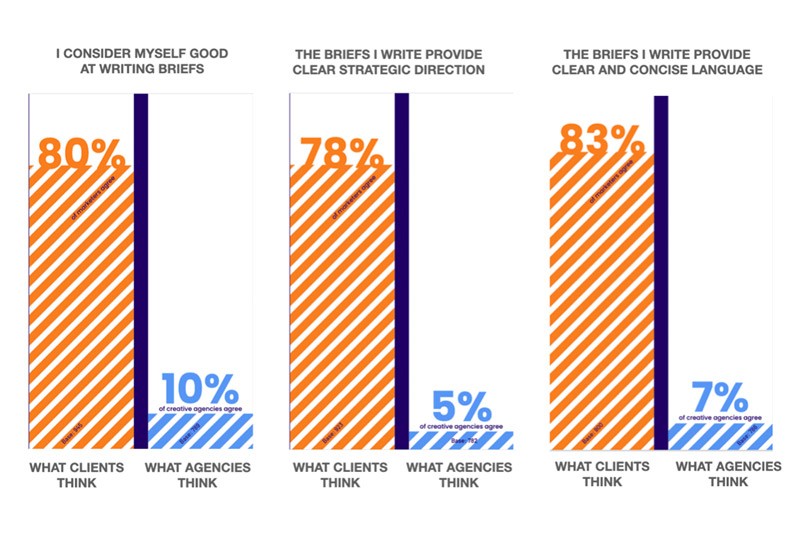Across the last 12 months, I’ve noticed a distinct upswing in a certain type of project undertaken by TrinityP3.
It’s the type of project I’d call a ‘pivot project’. I give it this name not because a ‘pivot’ of some kind is the desired, up-front objective. No – the recommendation to pivot comes from us, once we’re under the hood and realise that to improve marketing outcomes, we need to take our client on a new journey.
The truth is this: as the pressure on marketers continues to increase from all angles, they’re finding it more and more difficult to work out what they actually want or need, from their agencies. The consideration of agencies and how best to work with them is getting squeezed out amongst the myriad other worries of the modern-day marketer. And, given that generally speaking, a huge chunk of a marketing budget is deployed through or with agencies, this isn’t a good place to be.
Back to the pivot project. It often starts with us being asked to pitch an agency or help build a case for pitching an agency deemed unsuccessful or in some way not fit for purpose.
Getting back to basics
So far, so good. But increasingly often, once we establish a baseline situation analysis, it becomes clear that our client simply can’t cut through the noise and chatter to get back to basics.
Extensive experience in the field suggests that this can be for many reasons:
- It can be because there’s a basic lack of respect for the functional relationship held with an agency.
- It can be because at the root, the marketing team doesn’t know or hasn’t yet established its own strategy or strategic imperatives.
- It can be because the right information is not being communicated or shared with an agency, or even within different parts of a marketing team.
- It can be because there are so many competing silos within a marketing function, clarity has been impossible to achieve.
- It can be because long-held frustrations (on either the marketing or agency side) have not been expressed, dealt with or have been left to fester.
- Or, it can be because the marketing team, or parts of the organisation as a whole, have no idea of exactly what is in the agency scope and therefore have expectations misaligned to reality. In addition to this, the scope (and therefore the resourcing, the fee, the operating cadence and all sorts of other things) will be sub-optimal.
In 99 out of 100 cases, one thing is for sure. The original aim of ‘let’s pitch the agency’ won’t solve the deeper issues. The project needs to be pivoted away from this foregone conclusion and the basics need to be addressed.
Getting the clarity required
What is our strategy? What are our big-bucket plays? And if we know these things – What do we want from our agency? How do we want to work with their agency? What remit should our agency have? Why are we experiencing challenges with our agency?
These are all questions that we workshop or otherwise investigate with our marketing clients and their agencies, in order to establish a baseline against which a success plan can be developed.
It’s not simply a case of asking the questions. In addition to extensive documentary discovery, there’s an important role for stakeholder interviews across various functions, tailored to extract the nuances of agenda, opinion, challenge and priorities that can be pulled together and applied to internal process and structure, and agency requirements.
Define what you really need
Too many marketers think of their agencies as a passive entity, there to soak up tasks, do what they’re told at different times (we want thought leadership! But not now, later! Right now, just do what we’re asking! Quickly! No, not like that – like this! Don’t listen to my colleague in the digital team – we need it on TV!).
And a passive set-up agency relationship will also be much more likely to suffer from scope confusion or be used as a blunt tool. One of the more common examples is where a team of media agency planners and buyers are pressed into ‘doing modelling’ – without any specific analytical expertise, or any project cost involved, somehow using excel and some sales data to magic up something that can serve to identify and quantify media attribution.
A much better way to consider your agency is as an active agency – precision weapon. Not passive, but instead a SWAT team, tailored to fit and who can be pointed at targets (your targets) and deployed with effective force, using all the expertise at their command.
It’s a stretched analogy I know but just consider it. Is your agency active? Is it meshed and trained to work with your own team, across all departments or functions, in achieving a crystal-clear strategy or set of targets?
An ‘Active’ agency? So what?
Amongst other things, an ‘active’ agency will:
- Know when to stand up and challenge, and know when to get on and do
- Be able to just do without awaiting specific instruction
- Be sufficiently informed to understand deeper nuances of your organisation
- Be able to stand with you, not just in front of you, in board meetings – in other words, a visible and active strategic partner
- Be able to alert you pro-actively to a given situation or opportunity, rather than await a brief
- Be very clear with you about where their scope begins and ends – and, where they either have or do not have the requisite expertise to perform specific requests or tasks
- Bring on the right people, and their best people, and motivate them to work with you
- Bring learnings and insights to the table, not just facts and figures
- Become more and more articulate and confident in an advisory capacity to you personally, your team and your C-Suite, over time
- Be more likely to last longer than 2-3 years, saving considerable stress, cost and time involved in repeatedly pitching
Sounds good? Of course, it does. And many agencies can and do operate like this – with clients invested in setting things up correctly.
The truth I often find is that when looking at an agency’s output for a specific client, the quality of that output is completely at odds with what I’ve seen from the same agency working on a different client. I don’t have to spell out where the strong or weak link can be found.
None of this is to say that at some point, an agency should not be pitched, that an agency can’t be at fault, or that the relationship might simply have run its course.
However, what we strongly advise is – pitch when you’re ready to pitch and be conscious of what needs to be in place before ‘readiness’ is achieved, and build a plan to get there. You’ll save yourself a lot of stress and end up with better outcomes.
We help marketers and agencies become great through the work they do together. What major business challenge could we help you solve?




